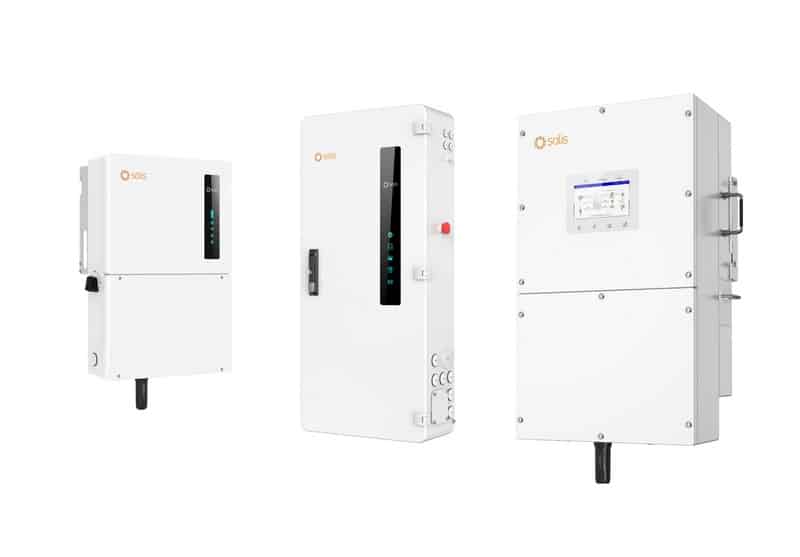Ohio mayors stump for IRA Direct Pay provision to install more solar

Ohio mayors are urging that solar projects in their cities be able to continue using the 2022 Inflation Reduction Act (IRA) Direct Pay provision, which has supported numerous solar projects in the state. They attest that without the tax credit provision, many of these projects would not have been possible.
Direct Pay is a provision in the IRA that allows local governments and other tax-exempt organizations — including churches, hospitals and schools — to claim tax credits for investing in renewable energy projects for the first time, alongside the private sector.
Threatening this provision, the Congressional House Ways and Means Committee on May 12 released a draft tax proposal including significant rollbacks to the tax credits available to local governments through Direct Pay. The proposal was included within the House Ways and Means Committee markup to its Fiscal Year 2025 reconciliation bill, which President Donald Trump has dubbed “One big, beautiful bill.”
To counter the cuts being encouraged within the Committee bill, three rural Ohio mayors held a press call on May 13 to testify about the value of the IRA Direct Pay provision. These Ohio mayors included Edward Kraus of Solon, Steve Patterson of Athens, and Sharetta Smith of Lima.
“All three mayors on the call represent cities with populations lower than 35,000 and have boosted their economies with clean energy projects, demonstrating that Direct Pay has benefited cities and towns of all stripes,” said Georgia Panitz, an associate for energy and sustainability at FGS Global, which facilitated the press call.
Worth noting: Ohio has also seen energy policy corruption at the state level with the House Bill 6 Scandal. The passage of HB 6 allegedly involved roughly $60 million in bribes tied to utility companies used to secure more than $1.5 billion in ratepayer subsidies for aging coal and nuclear power plants. Two former FirstEnergy executives were indicted by a federal grand jury in January, charged with one count of participating in a racketeering (RICO) conspiracy.
Mayors explain Direct Pay benefits
Athens is one city in Ohio that has benefited from the Direct Pay provisions, said Mayor Patterson during the May 13 call.
“Our city of Athens East Side solar project was a 2.1 MW solar array project, which utilized the community center campus, where we deployed solar on the rooftop of our community center, a canopy in front of our seasonal swimming pool, and then also a significant ground mount array next to our wastewater treatment plant,” he said. “About 90% of the energy for our seasonal swimming pool is coming directly from the sun. With the PPA agreement, we have a six-year buyout [from Kokosing Solar] at the end because of the Inflation Reduction Act credits.”
Lima, Ohio, has also gained savings through a Direct Pay solar project:
“The city of Lima has put floating solar panels on two of our reservoirs. it is going to allow us to save on our water treatment plant electricity, [which produces a] bill of about $1 million per year,” said Mayor Smith. “Projections through our partner D3Energy, we’re going to save rate payers $200,000 in the first year and $10 million over the life of the project.”
In Solon, Ohio, a group of solar projects is in early development.
“We now have a program for renewable energy, exploring lots of different options for solar,” said Mayor Kraus. “We’re looking at both rooftop solar and solar on the ground; we’re trying to aggregate it.”
Direct Pay Tracker
Another participant in the May 13 call was Kate Wright, executive director of Climate Mayors, a bipartisan network of nearly 350 mayors across 46 states, collectively representing 60 million people. Climate Mayors and other partners launched the Local Government Direct Pay tracker, “a first-of-its-kind tool showing where federal tax credits are helping support clean energy projects in U.S. cities across the country.”
The Local Government Direct Pay tracker currently accounts for more than 100 clean energy projects across 29 states and 59 jurisdictions, including Ohio, Wisconsin, Michigan, Texas, New Mexico, Florida, and Indiana, according to the organization website.
“The projects reflected in the tracker demonstrate how clean energy tax credits, which the private sector has benefited from for decades, are now helping local governments and nonprofits unlock innovative clean energy projects, from installing solar energy and creating more energy independence, to purchasing electric vehicles and reducing toxic pollution. The Direct Pay tracker’s interactive dashboard allows users to filter projects by Congressional district, project type, and tax credit,” the Climate Mayors website explains.
The tracker was developed in partnership with C40 Cities, the Urban Sustainability Directors Network (USDN), the Sustainable Cities Fund (SCF), and Atlas Public Policy, and in collaboration alongside Lawyers for Good Government (L4GG) and World Resource Institute (WRI), Climate Mayors states.
Upcoming Ohio solar projects
Preceding the call, a bipartisan coalition of 30 Ohio mayors and local officials sent a letter on April 24 to the Ohio Congressional delegation, seeking to protect the Direct Pay provision. The letter was organized by Power a Clean Future Ohio (PCFO). “There are 13 tax credits available to local governments, including the qualified Clean Electricity Investment tax credit for solar, wind, and geothermal projects (48E), Commercial Clean Vehicles tax credit (45W), and the Alternative Refueling Property Credit (30C),” PCFO stated in the letter.
PCFO cites a host of Ohio projects among the solar and other clean energy projects that have been supported by the Direct Pay provision:
- Cuyahoga County plans to utilize Climate Pollution Reduction Grant funds to develop multiple brownfield and landfill solar sites within Cuyahoga County and the City of Painesville that will produce 63 MW of renewable energy, putting Northeast Ohio on a pathway to achieving its 2030 and 2050 emissions reduction goals. This program will create 136 construction jobs, 17 jobs retained and re-skilled from coal-fired power plant to solar and battery storage facility, 100 pre-apprenticeship positions, and 6 total staff hired for new positions across Cuyahoga County and the cities of Cleveland and Painesville. The project will leverage approximately $60 million of federal tax credits through Direct Pay.
- The City of Lima is constructing a floating photovoltaic (FPV) facility on the surface of Twin Lakes Reservoir, located next to the city’s water treatment plant. The 2 MW of power generated by this FPV system will directly power the city’s water treatment plant. $890,000 of Direct Pay will support this project upon its completion in 2026.
- The City of Cincinnati is planning to file for $405,000 in Direct Pay tax credits for five solar projects on recreation centers and municipal buildings in the city. The city has also purchased nine electric vehicles they plan to file for.
- Three rooftop solar projects are planned to be installed on senior living facilities in the cities of Reynoldsburg, Macedonia, and Sylvania, all of which are dependent on Direct Pay tax credits to make them financially viable. These projects total nearly 300 kW of solar energy and will result in significant energy savings for seniors in Ohio.
- The City of Columbus accelerated a 6 MW bioenergy project at the Southerly Water Reclamation Facility to secure $120 million in savings from the IRA Direct Pay provisions. In addition, Columbus is poised to develop a 5 MW community solar array for its municipal power customers and expand its residential solar program with $15 million in Solar for All grant funding and Direct Pay tax credits.





Comments are closed here.